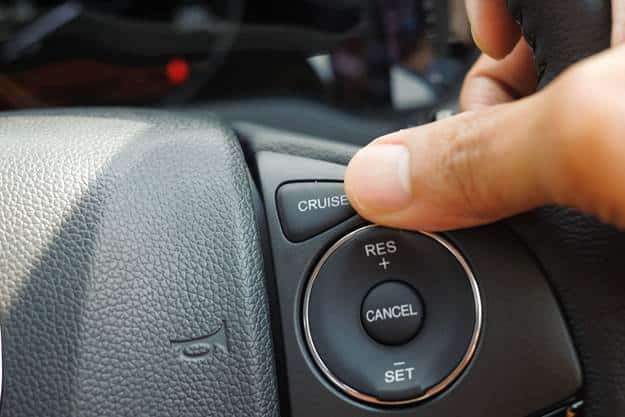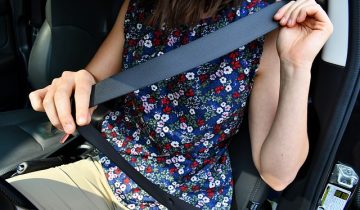Rear end collisions are one of the world’s most common car accidents. They are typically caused by distracted driving, but another leading cause is drivers following behind vehicles too closely.
When you are following too closely behind another driver, you might need to give yourself more time to stop if they suddenly brake. This is why tailgating is not only unpleasant but dangerous for both drivers. Due to this common circumstance, driving educators devised the three-second rule as an easy way for drivers to remember not to follow another car too closely. Let’s consider why three seconds is the minimum distance recommended by driving educators.
What Is the Three Second Rule When Driving?
Simply put, the 3 second rule is an easily understandable guideline for drivers in almost any situation. The rule simply calls for you to maintain a following distance of at least three car lengths behind the vehicle in front of you. Another way to think of it is being three seconds behind, as three car lengths don’t make as much of a difference at greater speeds. To figure out how many seconds are between you and the vehicle in front of you, watch as they pass a road sign, tree, or landmark, and then count out loud how many seconds it takes to pass that same object.
The three second rule isn’t always applicable to keeping a safe distance. For example, if you’re driving in treacherous conditions, then it isn’t the best rule of thumb. This is because rain, sleet, snow, and other forms of precipitation might impact how quickly you can stop. Similarly, the road surface plays a role as well. Another thing to consider is the weight of your vehicle, as heavier vehicles will take more time to slow down. In bad weather or heavy vehicles, you will want to add a couple of seconds to give yourself more time to slow down.
Does the Three Second Rule Apply in All Seasons?
As mentioned above, the three second rule isn’t always a precise method. Ice and snow are two reasons driving is more treacherous in the winter. If you’re on a road that might be covered in black ice, sleet, or snow, then you’ll want to give other vehicles a wide berth on the road.
While people are apt to drive more cautiously in the snow, it can still take much longer to slow down, even if you’re going five or ten MPH less than you usually would. You never know when a fallen branch might suddenly cause the vehicle in front of you to brake. Always ensure you’re not driving distractedly, and maintain a close eye on your surroundings and other traffic.
Roads are most slippery when temperatures are just below freezing. This is a treacherous time zone because while you might see rain falling from the sky, it can quickly freeze into a thin layer of ice when it hits the ground. Seeing rain in the air can be incredibly deceiving for many drivers, so keep in mind the temperature before putting the pedal to the metal.
When Is It Most Dangerous to Drive?
While you might think that winter’s slippery roads and poor visibility would make it the most dangerous time to be on the roads, the truth is quite the opposite. Summertime is when car accidents are most prevalent, so don’t think you can give the three second rule a rest just because the sun is out.
Some drivers tend to forget safe driving protocols in ideal conditions, such as a warm, sunny day, which causes them to drive a little faster. Summertime is also when many more people on the road might not have the most driving experience. Teen drivers who just got their learner’s permit or driver’s license tend to have less knowledge of what to do in certain road situations. Also, when there are a lot of cars on the highway heading out for a vacation or a day at the beach, it can get overwhelming. Experienced drivers with decades of driving under their belts can forget the fundamentals when encountering drivers with road rage in hot temperatures.
Drivers also underestimate how much visibility you can lose due to the sun’s glare. This is another big reason why car accidents go up in the summer. Just remember that just because the weather is nice doesn’t mean that roads are any less dangerous, and you shouldn’t give other drivers any less space. The carefree attitude that can come with nice weather can make them even more hazardous.
General Driving Tips to Follow
Generally speaking, there are some rules that every driver should keep in mind. In addition to the three second rule, it’s always a good idea to follow basic protocols in all situations. Looking both ways is crucial when pulling out onto an intersection, but keep an eye out for sudden curves or bends in the road that could obscure an oncoming car.
Another piece of advice that might raise some eyebrows is to turn off your cruise control if you’re on a busy roadway. If you don’t have adaptive cruise control that adjusts itself based on surrounding traffic, then you don’t want cruise control when there are a lot of other drivers around. It can prove more hazardous than simply controlling the speed of your vehicle. Even adaptive cruise control isn’t the best tool if you’re on a really busy roadway.
When In Doubt, Follow the Three Second Rule
It is best to follow the three-second rule in just about any situation. When you keep a safe braking distance between your vehicle and the one in front of you, you significantly reduce the likelihood of a car accident. Remember that while it may sometimes be the four or five or six second rule depending on driving conditions, as long as you have enough time to slow down safely, you’ll be much more secure on the roads.



